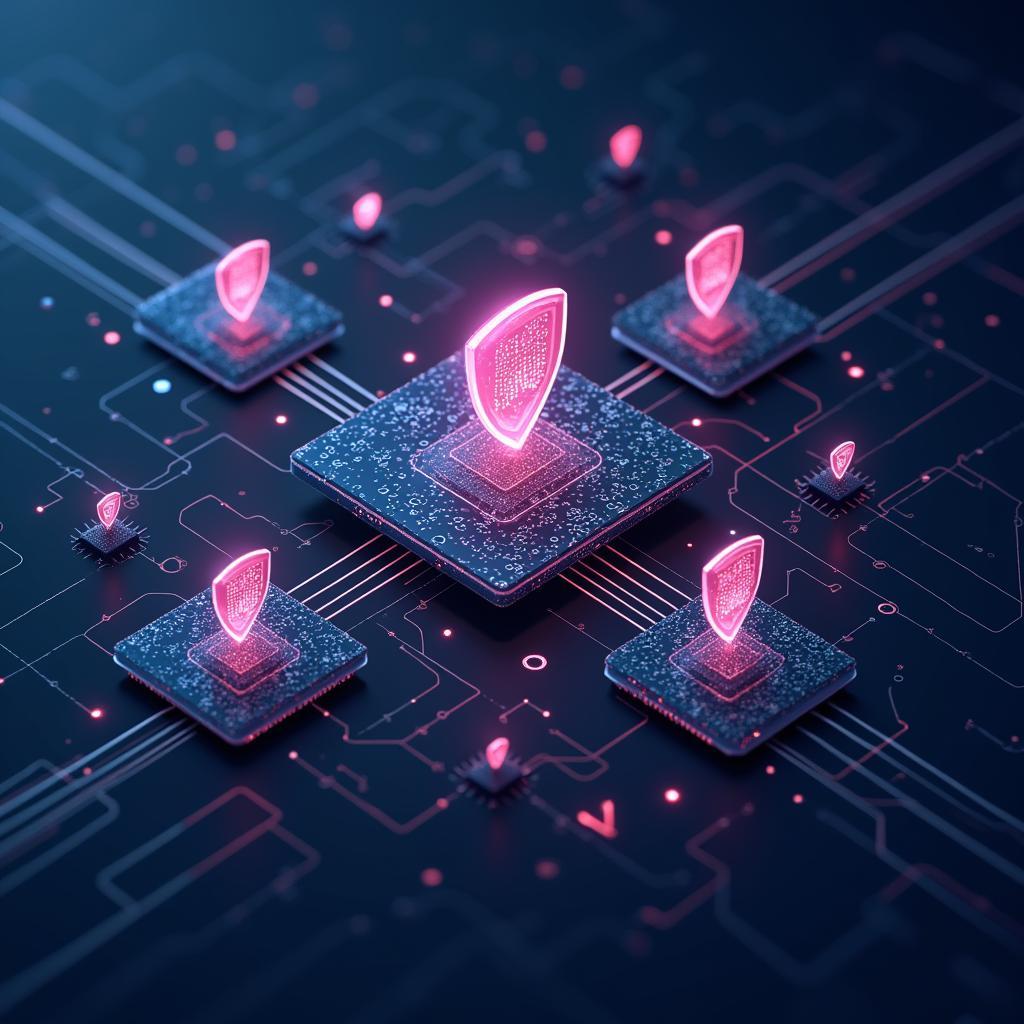The IELTS Reading test is a crucial part of the IELTS examination, demanding both quick comprehension and critical analysis of texts. Recent trends have shown an inclination towards contemporary and relevant topics such as technology, which makes it highly likely that you might encounter a passage about “How is blockchain technology transforming intellectual property rights?”. Based on past data, topics related to blockchain and intellectual property are gaining traction, reflecting their growing significance in today’s technological landscape. Therefore, understanding this subject will not only aid you in your exams but also keep you updated with ongoing technological advancements.
Table Of Contents
Main Content
Practice IELTS Reading Passage on Blockchain Technology and Intellectual Property Rights
Reading Passage: Blockchain Technology and Intellectual Property Rights
In recent years, blockchain technology has emerged as a revolutionary force that can transform a plethora of sectors, including intellectual property (IP) rights management. Blockchain, essentially a decentralized ledger technology, offers transparency, immutability, and security, which are key attributes that can enhance the management and protection of intellectual property.
One of the primary ways blockchain can revolutionize IP rights is through the establishment of a clear and indisputable ownership record. Traditionally, proving ownership of IP has been a cumbersome process, often requiring extensive documentation and time. Blockchain, however, simplifies this by providing a tamper-proof record of creation and ownership. When an IP is registered on a blockchain, every transaction related to it is time-stamped and linked to a unique cryptographic key. This ensures that the ownership and the history of the IP cannot be altered, thereby reducing disputes and potential litigations.
Moreover, blockchain can streamline the licensing process. Smart contracts, which are self-executing contracts with the terms directly written into code, can ensure that the licensing agreements automate the execution of the contract terms. This automation reduces the administrative burden and minimizes human error, enabling faster and more efficient licensing operations.
Furthermore, in combating counterfeiting and piracy, blockchain can play a pivotal role. Each product can be given a unique digital identifier, which can be tracked on the blockchain. Consumers and authorities can verify the authenticity of the product by scanning this identifier, ensuring that only genuine products are in circulation. This can be particularly impactful in industries like pharmaceuticals, luxury goods, and digital media, where counterfeiting is rampant.
Despite its potential, the adoption of blockchain in IP management is not without challenges. Technical complexities, scalability issues, and the need for widespread acceptance are significant hurdles. Additionally, integrating blockchain with existing legal frameworks requires substantial revisions and updates. Nevertheless, as technology continues to evolve, the plausibility of overcoming these challenges increases.
In conclusion, blockchain technology holds the promise of transforming intellectual property rights through enhanced security, streamlined processes, and robust verification mechanisms. As industries adopt this technology, it will be essential to address the associated challenges to fully realize its potential benefits.
 Blockchain Technology and IP Rights
Blockchain Technology and IP Rights
Questions
Multiple Choice
-
What is one of the key attributes of blockchain that enhances intellectual property management?
A. Scalability
B. Transparency
C. Centralization
D. Privacy -
How does blockchain ensure the history of intellectual property is secure?
A. Through centralized documentation
B. By using a unique digital identifier
C. By linking transactions to a unique cryptographic key
D. Through administrative oversight -
What role do smart contracts play in the licensing process according to the passage?
A. They moderate disputes between parties
B. They automate the execution of contract terms
C. They control the scalability issues
D. They ensure manual verification of contracts
True/False/Not Given
- Blockchain guarantees that the history of an intellectual property cannot be altered.
- Blockchain technology is already fully integrated into existing legal frameworks.
- Pharmaceuticals could benefit significantly from blockchain technology to prevent counterfeiting.
Answer Keys and Explanations
- B – Transparency: Blockchain’s transparency is one of its crucial attributes that can enhance intellectual property management by providing a clear and comprehensive record.
- C – By linking transactions to a unique cryptographic key: Blockchain secures the history by time-stamping each transaction and linking it to a cryptographic key, making it tamper-proof.
- B – They automate the execution of contract terms: Smart contracts automate processes, reducing administrative and human errors.
- True – The passage states that blockchain ensures that the ownership and history of the IP cannot be altered.
- False – According to the passage, the integration of blockchain with existing legal frameworks requires substantial revisions and updates, indicating it is not yet fully integrated.
- True – The text mentions that industries like pharmaceuticals can benefit from blockchain to combat counterfeiting.
Common Mistakes
- Misinterpreting Keywords: For instance, confusing ‘security’ with ‘privacy’.
- Neglecting Context: Overlooking how blockchain’s features apply specifically to intellectual property.
- Skipping Critical Terms: Missing out on phrases such as “time-stamped” or “cryptographic key” which are central to understanding blockchain’s security features.
Vocabulary
- Immutability (n): /ˌɪm.jəˈtɑː.bəl/ – The state of being unchangeable.
- Tamper-proof (adj): /ˈtæm.pər/ /pruːf/ – Designed to prevent tampering.
- Cryptographic (adj): /ˌkrɪp.təˈɡræf.ɪk/ – Relating to the art of writing or solving codes.
Grammar
- Present Perfect Continuous: Used to talk about actions that started in the past and are still continuing (e.g., “Blockchain has been emerging as a revolutionary force”).
- Passive Voice: Common in formal writing to focus on the action rather than the subject (e.g., “Transactions are time-stamped and linked”).
Advice
- Practice Regularly: Consistent practice with passages on contemporary topics will sharpen your comprehension skills.
- Expand Vocabulary: Enhance your understanding and usage of advanced vocabulary related to technological advancements and legal frameworks.
- Pay Attention to Details: Focus on small but significant details in the passage to avoid common traps in questions.
By comprehensively understanding how blockchain technology is transforming intellectual property rights, you will be better prepared for similar topics that may appear in your IELTS Reading test.



